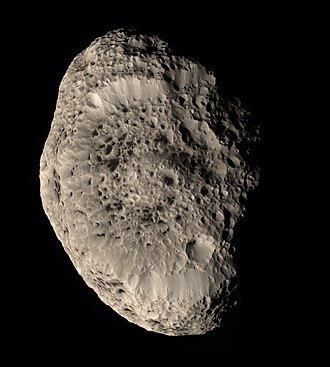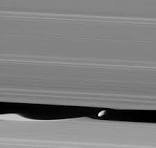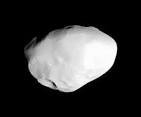Hyperion is notably irregular in shape, not conforming to a spherical form, which is why it’s described as potato-shaped. Its low density—estimated to be about half that of water—is due to its high porosity, meaning it is approximately 42% empty space. Unlike the predictable rotation of other moons, Hyperion tumbles in a random and chaotic fashion, with no stable axis of rotation. The moon’s surface is characterized by deep, sharp-edged craters. Due to its weak gravity and high porosity, impacting objects compress the surface rather than creating rims of ejected material. Hyperion orbits Saturn at a distance of about 1,481,100 km, between the orbits of the moons Titan and Iapetus. It is in a 4:3 orbital resonance with Titan, meaning it completes four orbits for every three completed by Titan. Hyperion was discovered on September 16, 1848, by American astronomers William Cranch Bond and George Phillips Bond, and independently by English astronomer William Lassell. It was the first non-spherical moon to be discovered in the Solar System, marking a significant finding in the study of celestial body diversity. Its unique characteristics continue to be a subject of study for understanding moon formation and evolution.

/ Oct 16, 2025
Menu
Hyperion: Chaotic Moon of Saturn with Unique Shape
noor-e-aisha
August 25, 2025
0







